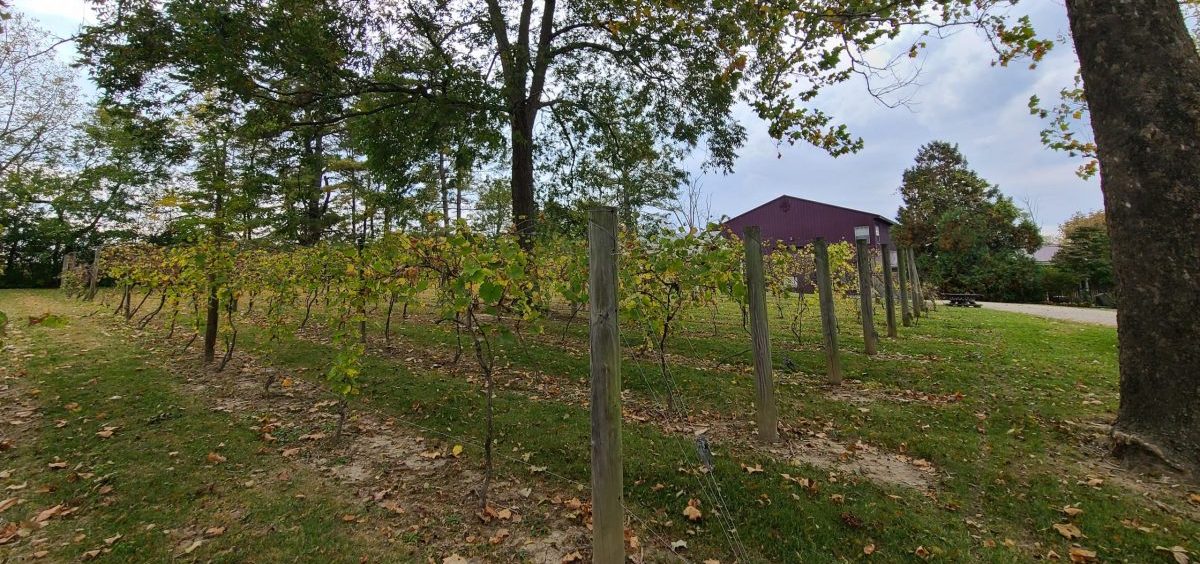News

Ohio is the USA’s 6th largest wine producer. This program is helping wineries expand
By: Tana Weingartner | WVXU
Posted on:
CINCINNATI, Ohio (WVXU) — When you think of wine country in the USA, you probably envision lush rolling fields of grape arbors in California, Oregon and Washington. You should also think of the place that first put American winemaking on the international map: Ohio.
Yes, Ohio. Politician, banker, and winemaker Nicholas Longworth is considered the father of the American wine industry. Longworth’s sparkling wine — made from Catawba grapes that delighted in Cincinnati’s rich hillside soil along the Ohio River — was wildly popular across the country and in Europe in the early to mid-1800s.
While California eventually became the leader in U.S. wine production, Ohio remains the sixth largest wine producer in the nation. Some 400 wine manufactures turn out 1.2 million gallons — that’s 500,000 cases — of wine each year. Plus, the Ohio Grape Industries Committee notes Ohio wineries account for more than 8,000 fulltime jobs, provide more than $1.3 billion in economic impact, and attract 1.2 million tourists annually.
Those wineries have until Friday, Nov. 4, to apply for a bonus round of the state’s Vineyard Expansion Assistance Program.
Expansion, or sustaining?
About an hour up the road from where Longworth grew his wine fortune, Eddie McDonald looks at a small field of Marquette grape vines that greet guests on their way in. McDonald and his wife, Beth, opened Hanover Winery in their backyard in Hanover Township between Oxford and Hamilton 14 years ago.
“What that is is black rot,” he says, pointing to shriveled black clumps of dead grapes on vines quickly turning yellow. “We had a really great crop for Marquette, but that also brought a whole lot of rain (and) rain brings black rot, downy mold, powdery mildew and other things we have to fight in Ohio with grapes. What you see still hanging is what we didn’t pick because the amount of black rot on it just destroyed the product.”
As disheartening as that sounds, the real problem is on the vines out back.
“We were hit four years in a row with a chemical called dicamba from the farmers around us. It pretty much wiped out six-and-a-half acres of vineyard,” McDonald explains.

Hanover Winery last year applied for and received funding through the Vineyard Expansion Assistance Program to purchase new vines. They’re applying again this year, too.
“Some of the vines we thought we could save from being oversprayed didn’t make it another year, so we’re filling in ours. We’re not really expanding our vineyard,” McDonald clarifies. “We’re actually filling in all the areas that we don’t have any product growing.”
How the program works
The Vineyard Expansion Assistance Program is an incentive project created by the Ohio Grape Industries Committee (OGIC). It helps wineries establish themselves or expand their business with seed money to purchase new vines.
“We have 400 licensed wine manufacturers in the state, but only about 1,200 acres of grapes being grown,” explains Christy Eckstein, executive director. “There’s a demand for more grapes to be grown to help produce more Ohio wines from ground to glass.”
Wineries apply for the funding, and if accepted, they will be reimbursed. Eckstein says it’s a two-fold process: wineries undergo a pre-planting and a post-planting evaluation by a state viticulture team.
“An individual comes out and talks to the candidate about the location, what their plans are for the grapes, looks at the soil, the climate for that area, what types of grapes are going to be suitable for growing there, and also talks to them about equipment and their long-term plans on whether they’re planning to grow grapes and sell to fellow wineries or if, down the road, their plans are to establish their own winery,” she says. Basically, “getting a good idea of what their business plans are for the future.”
The thing with vines is it takes a while to get a usable crop. Sure, the vines may produce fruit the first year, but they won’t be considered ready for winemaking for three to five years.
According to Eckstein, the program dates to 2008 when it used a USDA specialty crop block grant. When those funds ran out, the organization got the state of Ohio to allow the OGIC to help wineries with production expenses. The program was reestablished in 2020. The grant process usually opens in June and funds are awarded in August. Eckstein says there were extra funds leftover this year, so the OGIC opened up an additional round.
Last year the program was expanded to allow growers to apply for funding to replace vines damaged through no fault of their own — acts of nature, chemical oversprays, etc.
“Primarily we were seeing and receiving questions from our growers as they were beginning harvest. In September and October, they were seeing kind of what some of those losses might be. And we felt the need to say, hey, we’ll take those existing funds; reopened the program, allow them to apply to replace and or expand their vineyards.”
Eckstein reports the Vineyard Expansion Assistance Program has handed out more than $111,000 since 2020, and another $82,500 is in the works.
9(MDU1ODUxOTA3MDE2MDQwNjY2NjEyM2Q3ZA000))

